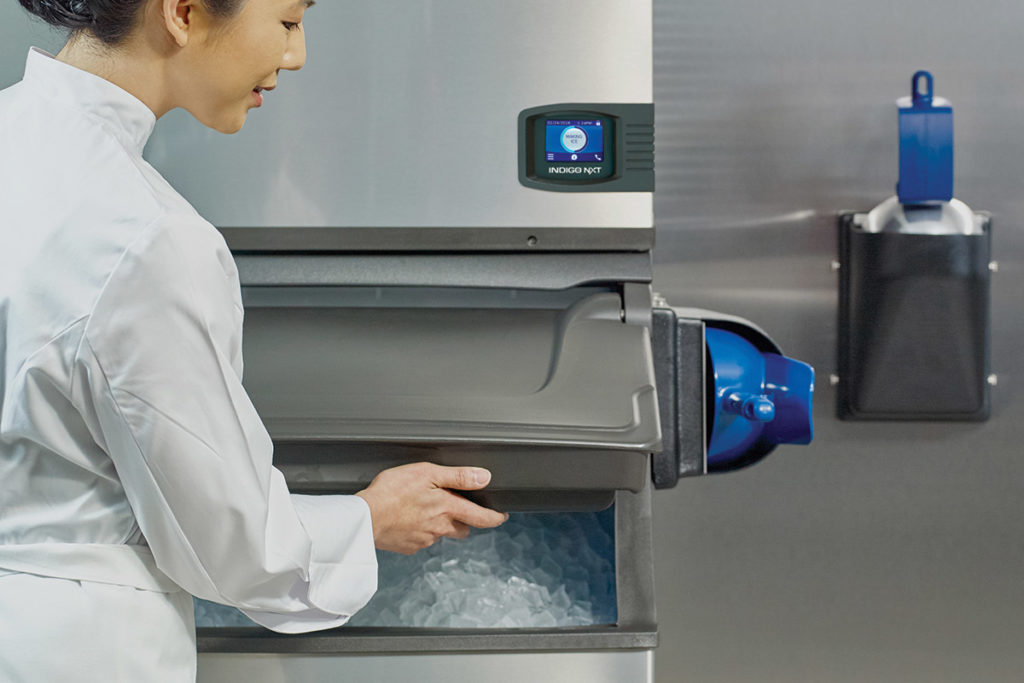How to Keep Ice Machines Clean

Ice is food, and like any other food in a kitchen it should be produced with equipment that’s clean and sanitary. Most municipal tap water is chlorinated to kill microorganisms and make it safe for drinking. However, operators shouldn’t use chlorinated water in an ice maker for two reasons: it can damage internal parts of the machine, and when ice melts it releases chlorine gas quickly, which can give your beverages an off odor and taste.
By filtering chlorine out of the water your ice machine uses, you’ve taken away its natural defense against mold, mildew, yeast and other microbes that grow in damp environments. For operations that produce baked goods or pizza, the ice machine will be particularly susceptible to growing slime that can give ice—and all beverages it’s used in—a flavor and odor that will leave a bad taste in customers’ mouths.
Follow manufacturers’ instructions for cleaning. At a minimum, you should clean and sanitize your ice machine and bin twice a year. Depending on conditions where your machines are located, you may have to clean them more often. Many models now have alerts that tell owners when the machine needs cleaning.
Ice machines also need to be descaled at least once a year, or more often depending on water conditions. Here again, detailed instructions are available from manufacturers in a variety of forms. The best way to make sure cleaning and deliming are done properly is by hiring a service agent.
- Advertisement -
- Advertisement -
TRENDING NOW
- Advertisement -
- Advertisement -
- Advertisement -
